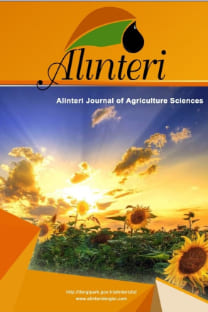Karadeniz Ülkelerinin Rekabet Gücü Analizi: Su Ürünleri Sektörü Örneği
Dünya su ürünleri üretimi son on yıl içerisinde hızlı bir şekilde artış göstermektedir. 2011 yılında dünyada 154 milyon ton su ürünleri üretilmiştir. Karadeniz bölgesi dünya su ürünleri üretiminde önemli havzaların birisidir. Karadeniz’e kıyısı olan ülkeler Bulgaristan, Gürcistan, Rusya, Romanya, Türkiye ve Ukrayna’dır. Karadeniz bölgesi dünya su ürünleri üretimi ve ticaretinde önemli bir rol oynamaktadır. Bu çalışmanın temel amacı, Karadeniz ülkelerinin su ürünleri sektöründe rekabet gücünü belirlemektir. Bu çalışmada Balassa’nın Açıklanmış Karşılaştırmalı Üstünlükler endeksi kullanılmıştır. Sonuç olarak Karadeniz ülkelerinin dünya su ürünleri ticaretinde dezavantaja sahip oldukları belirlenmiştir.
Anahtar Kelimeler:
AKÜ, Karadeniz, Rekabet Gücü, Su Ürünleri
-
The world fisheries production is rapidly growing in the last decade. The worldwide fisheries production in 2011 was about 154 million tons. The Black Sea region is one of the major basins in the world fisheries production. The Black Sea coastal countries are Bulgaria, Georgia, Russia, Romania, Turkey and Ukraine. The Black Sea region is an important player in the world fisheries production and trade. The aim of this study is to determine the competitiveness of the Black Sea countries in the fisheries trade. In this study used Balassa’s index of Revealed Comparative Advantage (RCA). According to the findings the Black Sea countries have a comparative disadvantage in fisheries sector.
Keywords:
RCA, Black Sea, Competitiveness, Fisheries.,
___
- Anonymous, 2002, Fishery Country Profile: The Republic of Bulgaria, ftp://ftp.fao.org/fi/DOCUMENT/fcp/en/FI_CP_BG.pdf [Erişim tarihi: 11.01.2013] Anonymous, 2005, Survey of the fish industry in Russia, FAO/Globefish, Rome.
- Anonymous, 2008, Fishery Country Profile: The Republic of Turkey. ftp://ftp.fao.org/fi/document/fcp/en/FI_CP_TR.pdf [Erişim tarihi: 11.01.2013]
- Anonymous., 2012a. Food and Agriculture Organization of the United States. http://www.fao.org/fishery/statistics/en [Erişim tarihi: 10.01.2013]
- Anonymous, 2012b. UN COMTRADE, http://comtrade.un.org/db/ [Erişim tarihi: 15.01.2013] Balassa, B., 1965. Trade liberalization and ‘revealed’ comparative advantage, The Manchester School of Economic and Social Studies, 33:92-123.
- Eremeev, V. N. and Zuyev, G. V., 2007, Commercial fishery impact on the modern Black sea: a review, Turkish Journal of Fisheries and Aquatic Sciences, 7:75-82.
- Khavtasi, M.; Makarova, M.; Lomashvili, I.; Phartsvania, A.; Moth-Poulsen, T.; Woynarovich, A., 2010, Review of fisheries and aquaculture development potentials in Georgia. FAO Fisheries and Aquaculture Circular. No. 1055/1. Rome.
- Neculita, M., Sarpe, D. A., Afanase, C., Neculita, V., 2010, Romania’s fishing policy competitiveness in European integration context, International Conference on Development, Energy, Environment, Economics, 272-276.
- Panin, N. and Jipa, D., 2002, Danube river sediment input and its interaction with the north-western Black Sea, Estuarine Coastal and Shelf Science, 54/3: 551-562.
- Taşdan, K., Çeliker, S. A., Arısoy, H., Ataseven, Y., Dönmez, D., Gül, U. ve Demir, A., 2010, Akdeniz Bölgesinde Su Ürünleri Avcılığı Yapan İşletmelerin Sosyo-Ekonomik Analizi, Tarımsal Ekonomi Araştırma Enstitüsü Yayın No: 179, Ankara.
- ISSN: 2564-7814
- Başlangıç: 2007
- Yayıncı: Adem Yavuz SÖNMEZ
Sayıdaki Diğer Makaleler
Karadeniz Ülkelerinin Rekabet Gücü Analizi: Su Ürünleri Sektörü Örneği
Ahmet AYDIN, Guchgeldi BYASHIMOV, Metehan YAYKAŞLI, Metehan YAYKAŞLI
Serkan ÖZER, Neslihan KULÖZÜ, Metin DEMİR
Banu KADIOĞLU, Mustafa CANBOLAT
GAP Bölgesinin Organik Tarım Potansiyeli ve Uygulanabilirliği
